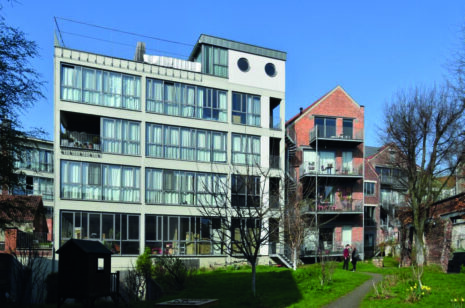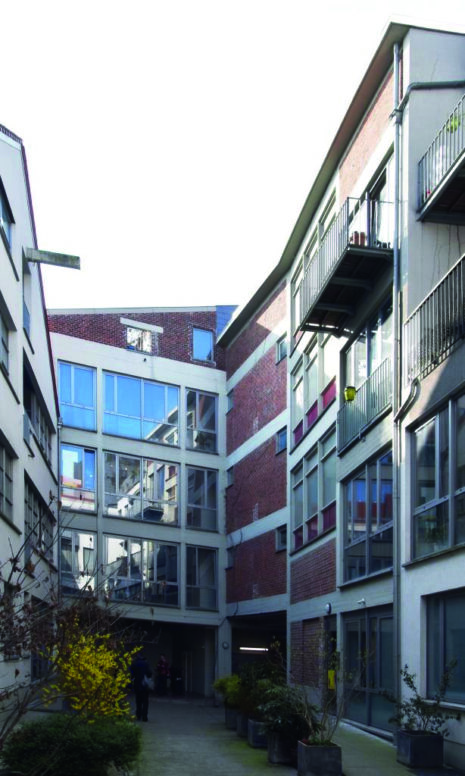Description
This project results from the transformation of several industrial buildings which accommodated a former wire-drawing mill and the EPEDA mattress shop. It was initiated in the framework of the “bourses d’achats collectives”, a programme by the City of Brussels enabling a large group of households to buy the structures communally. The complex consists of three buildings on the street and four in the centre of the block, which are now home to 54 dwellings, production, and office spaces. The project is organised around an inner courtyard that is accessible from the street via a large entrance lobby and a common hall. All the vertical cores leading to the dwellings start in this courtyard. Just as in other industrial-building transformations, the project shows a variety of housing typologies both in terms of size and interior layouts.
The dwellings were delivered casco (i.e. with just the structure, window, and heating but no finishing) and the interiors designed individually by the inhabitants. Besides the buildings, the project has two collective terraces on the roof and a large communal garden that opens onto the Rue de Moorsleede, where it has pedestrian access. The preserved façades of the original industrial buildings reveal different construction periods. The centre red-brick building dates from 1923, and is decorated with concrete bands. To its left is a later building from the 1950s, using the same materials with sterner ornamental features. To its right, a 1960s modernist building shows a concrete-mesh façade. All buildings are topped by tile roofs.
 Exterior view
Exterior view
 Courtyard view
Courtyard view
Originally published in: Gérald Ledent, Alessandro Porotto, Brussels Housing. Atlas of Residential Building Types, Birkhäuser, 2023.